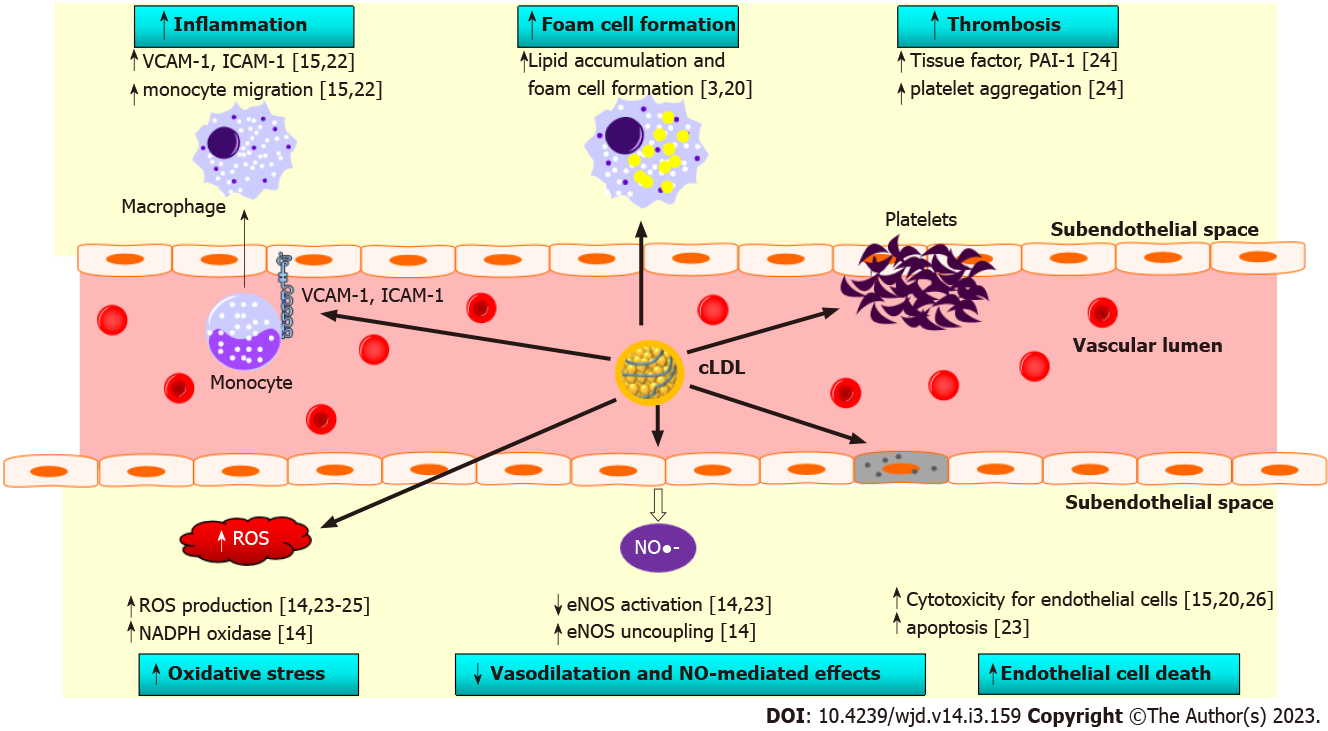Copyright
©The Author(s) 2023.
World J Diabetes. Mar 15, 2023; 14(3): 159-169
Published online Mar 15, 2023. doi: 10.4239/wjd.v14.i3.159
Published online Mar 15, 2023. doi: 10.4239/wjd.v14.i3.159
Figure 2 Role of carbamylated low-density lipoproteins in atherosclerosis.
Carbamylated low-density lipoproteins (cLDL) facilitates immune cell recruitment in the subendothelial space by increasing the expression of adhesion molecules vascular cell adhesion molecule-1 and intercellular adhesion molecule-1. It also promotes accumulation of lipids in macrophages and thus facilitates foam cell formation. cLDL induces platelet aggregation and thrombus formation associated with a higher activity of tissue factor and plasminogen activator inhibitor type 1. In addition, cLDL activates NAPDH oxidase and increases the production of reactive oxygen species. cLDL are less efficient than native LDL at activating endothelial nitric oxide synthase. Lastly, cLDL is cytotoxic for endothelial cells. VCAM-1: Vascular cell adhesion molecule-1; ICAM-1: Intercellular adhesion molecule-1; PAI-1: Plasminogen activator inhibitor type 1; cLDL: Carbamylated low-density lipoproteins; ROS: Reactive oxygen species; eNOS: Endothelial nitric oxide synthase.
- Citation: Denimal D. Carbamylated lipoproteins in diabetes. World J Diabetes 2023; 14(3): 159-169
- URL: https://www.wjgnet.com/1948-9358/full/v14/i3/159.htm
- DOI: https://dx.doi.org/10.4239/wjd.v14.i3.159









